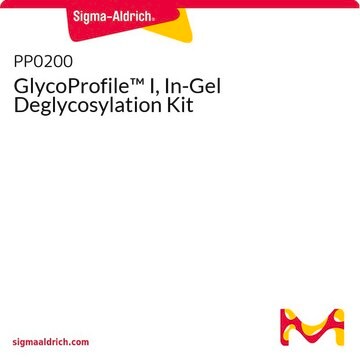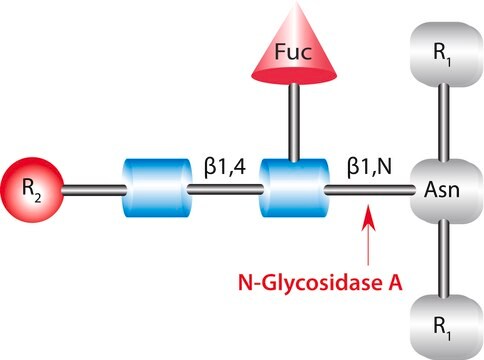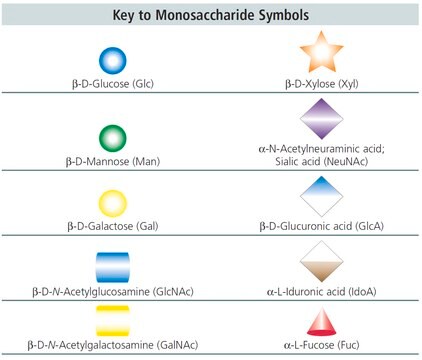NDEGLY
Native Protein Deglycosylation Kit
Synonym(s):
Protein Deglycosylation Kit
Select a Size
Select a Size
About This Item
Recommended Products
General description
For more information on each type of endoglycosidase, please refer to the Bulletin.
Application
Storage and Stability
Kit Components Only
- Endoglycosidase F1 .3 U
- Endoglycosidase F2 .1 U
- Endoglycosidase F3 .1 U
- Endoglycosidase F1 reaction buffer 200 μL
- Endoglycosidase F2 & 3 reaction buffer 200 μL
Storage Class
12 - Non Combustible Liquids
flash_point_f
Not applicable
flash_point_c
Not applicable
Choose from one of the most recent versions:
Already Own This Product?
Find documentation for the products that you have recently purchased in the Document Library.
Customers Also Viewed
Articles
Find deglycosylation kits for your research. Review the different features of deglycosylation kits for glycoproteins, enzymatic proteins, and native proteins.
Protein modifications are crucial for disease study. Analysis methods are key.
Learn about O-linked glycan strategies, O-glycosidase actions, how to remove sialic acid residues, β-Elimination, and O-glycan modifications.
Explore strategies for releasing N-linked glycans with PNGase F, PNGase A & native & sequential deglycosylation with endoglycosidases & exoglycosidases.
Our team of scientists has experience in all areas of research including Life Science, Material Science, Chemical Synthesis, Chromatography, Analytical and many others.
Contact Technical Service










